By Bill Adams
Some are called trade shows. Others are called expos. Those called conferences are multifaceted, with the larger ones featuring extensive educational and training programs. Every year in the United States there are numerous such events drawing fire service personnel from across the country. A handful style themselves as “national” shows. In Indianapolis, the Fire Department Instructors Conference (FDIC) is held annually (except during pandemics). It is the largest domestic national fire service trade show, drawing more than 30,000 attendees.
Fire apparatus manufacturers have traditionally used the FDIC forum to introduce their newest and greatest apparatus innovations. Most of the rigs displayed there are new, including numerous demonstrator models available for immediate sale. This missive is about the fire truck side of the trade shows, especially the regional shows.
FA Viewpoints: Walking the Trade Show Floor
Regional trade shows should not be disparaged or discounted by apparatus purchasers. Although some manufacturers regularly attend them, local dealers are usually responsible for organizing and staffing the displays. Often the apparatus shown have been sold and are en route to being delivered after the show. Some have recently been placed in service and brought to the show. Most are equipped, and that is a benefit to potential purchasers.
The benefit to prospective buyers is to observe, compare, and evaluate how various fire departments actually equip their new apparatus. Granted, new shiny fire trucks with large hosebeds and empty pristine compartments are impressive looking and accurately display workmanship unobscured by equipment and packed hose. But equally important is to see how functional the apparatus is—or can be—when loaded and ready to go.
The following photographs are from a regional show. Comments are this writer’s personal opinion about features liked as well as disliked. Keep in mind that most of the photographed rigs are designed for specific fire departments for THEIR use today and tomorrow and NOT for the department I belonged to 20 years ago. Readers may find some of the layout ideas useful or find some they want to steer clear of.
Rub Rails
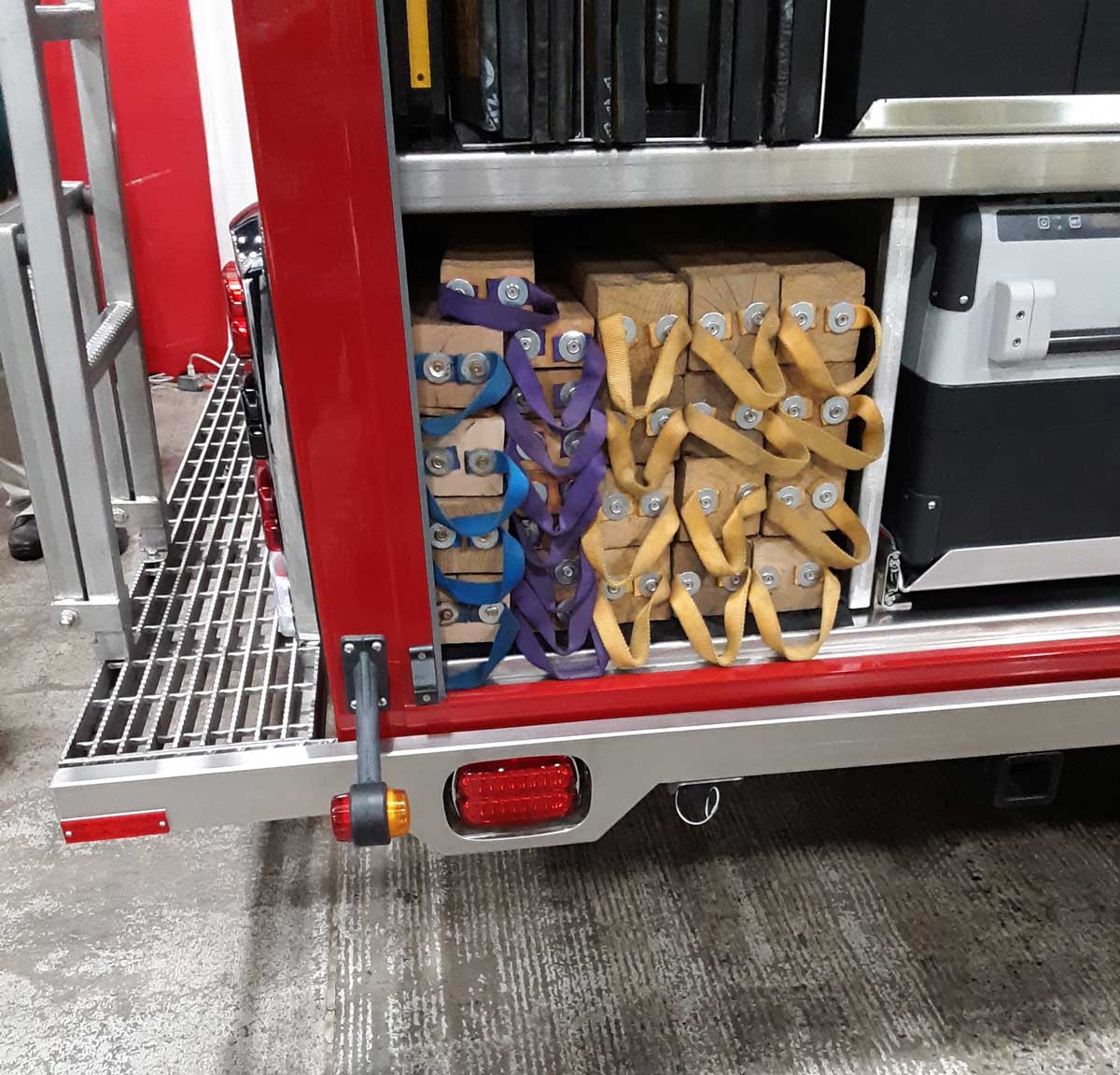
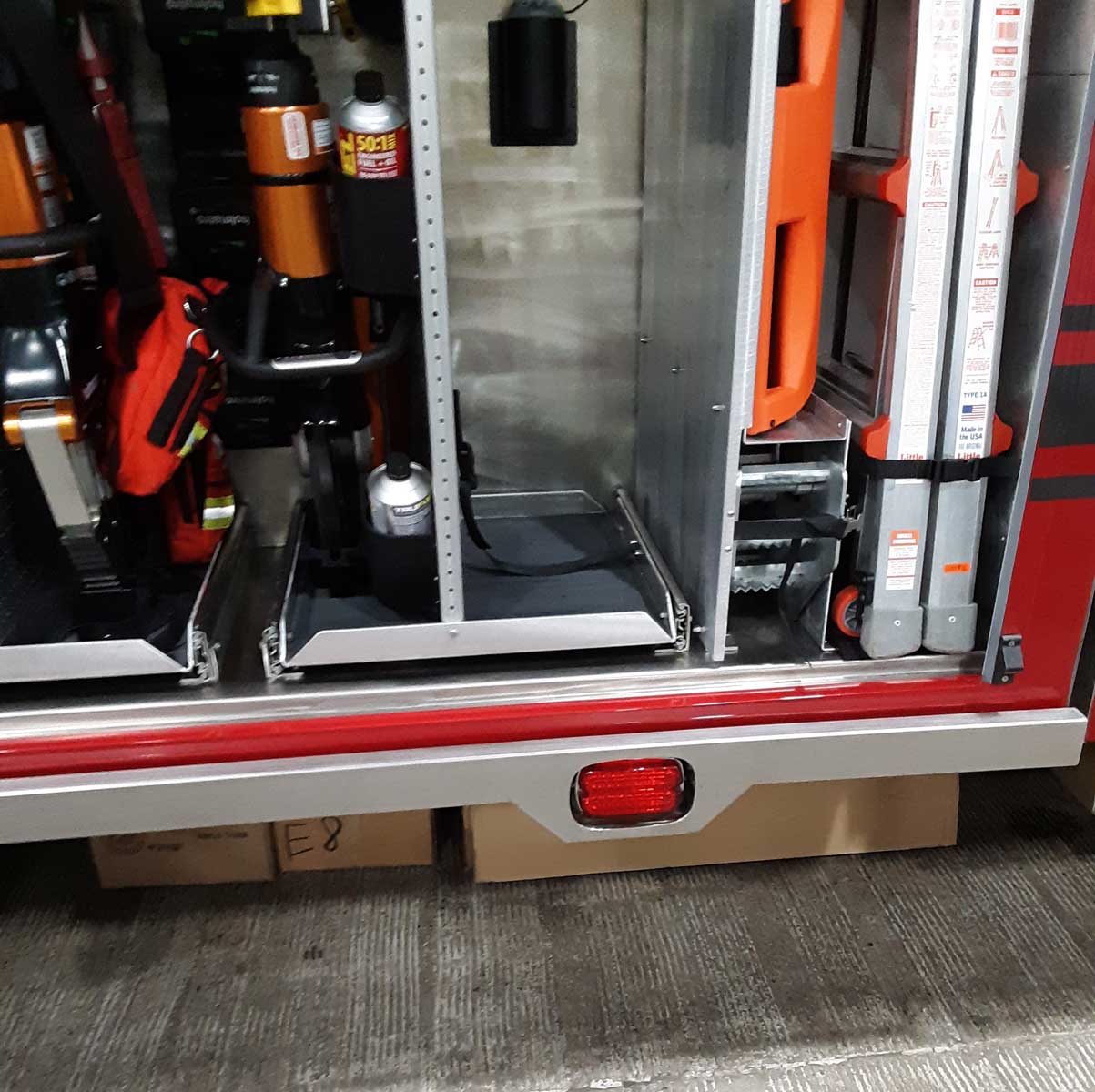
(1-2) Lower-level warning lights on body outer corners are often difficult to locate when compartment door jambs are close to the body corners. 4Guys flared the rub rails on this rig to accommodate fully recessed lower-level warning lights. The same thing can be done with treadplate rub rails. It has a real aggressive “non-slip” rear step surface.

(3) Rub rails are intended to be sacrificial and are bolted to the body. They’re relatively inexpensive to replace. But if the large diameter hose (LDH) valve on this gated suction inlet takes a hit before the rub rail does, it could be an expensive fix. It could be very expensive if the pump’s casting or internal piping is compromised.
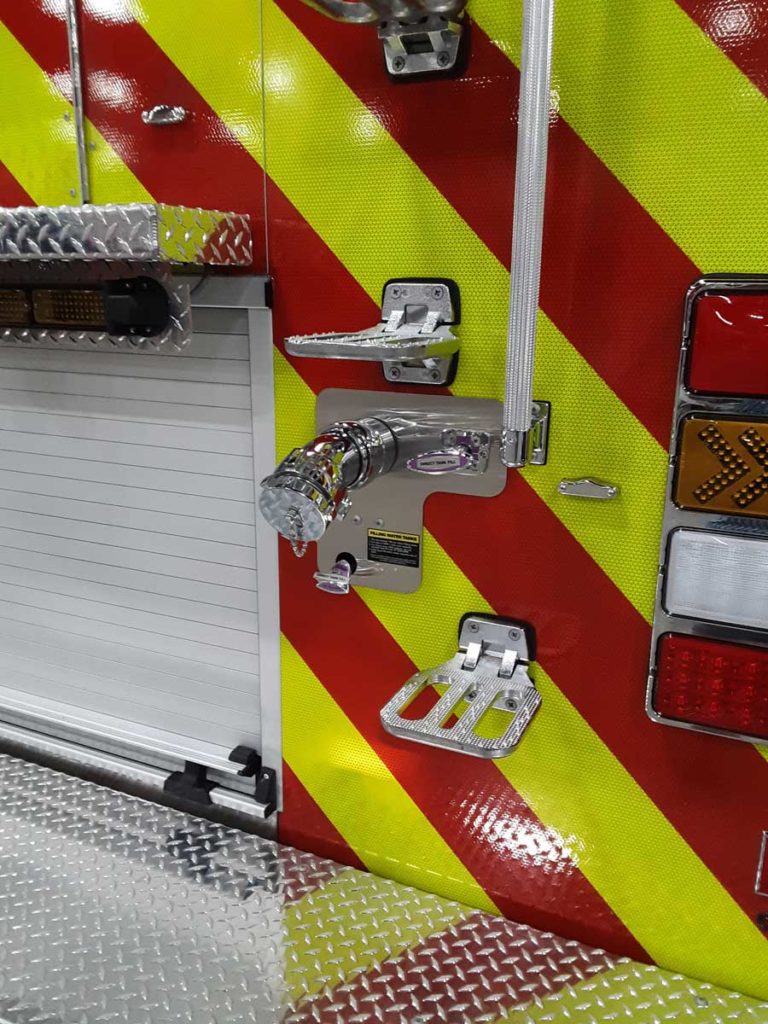
Gauge?
(4) The direct tank fill valve with down turned elbow on this rig is easily accessible from the ground. It is a neat-looking installation with the drain and “instructions” grouped together. Most tank manufacturers have a maximum 100 psi fill pressure. A pressure gauge here could help ensure that maximum pressure is not exceeded.
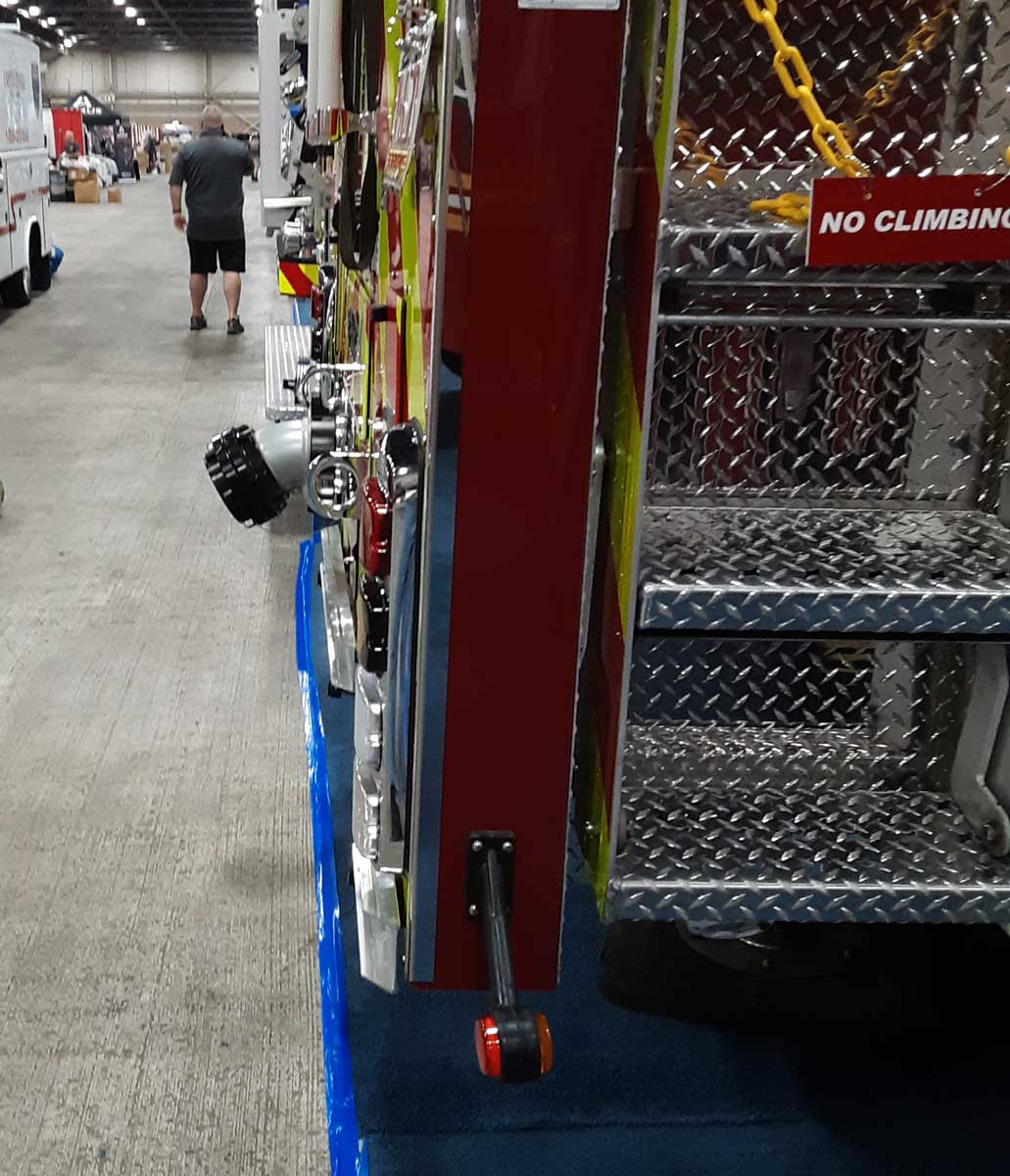
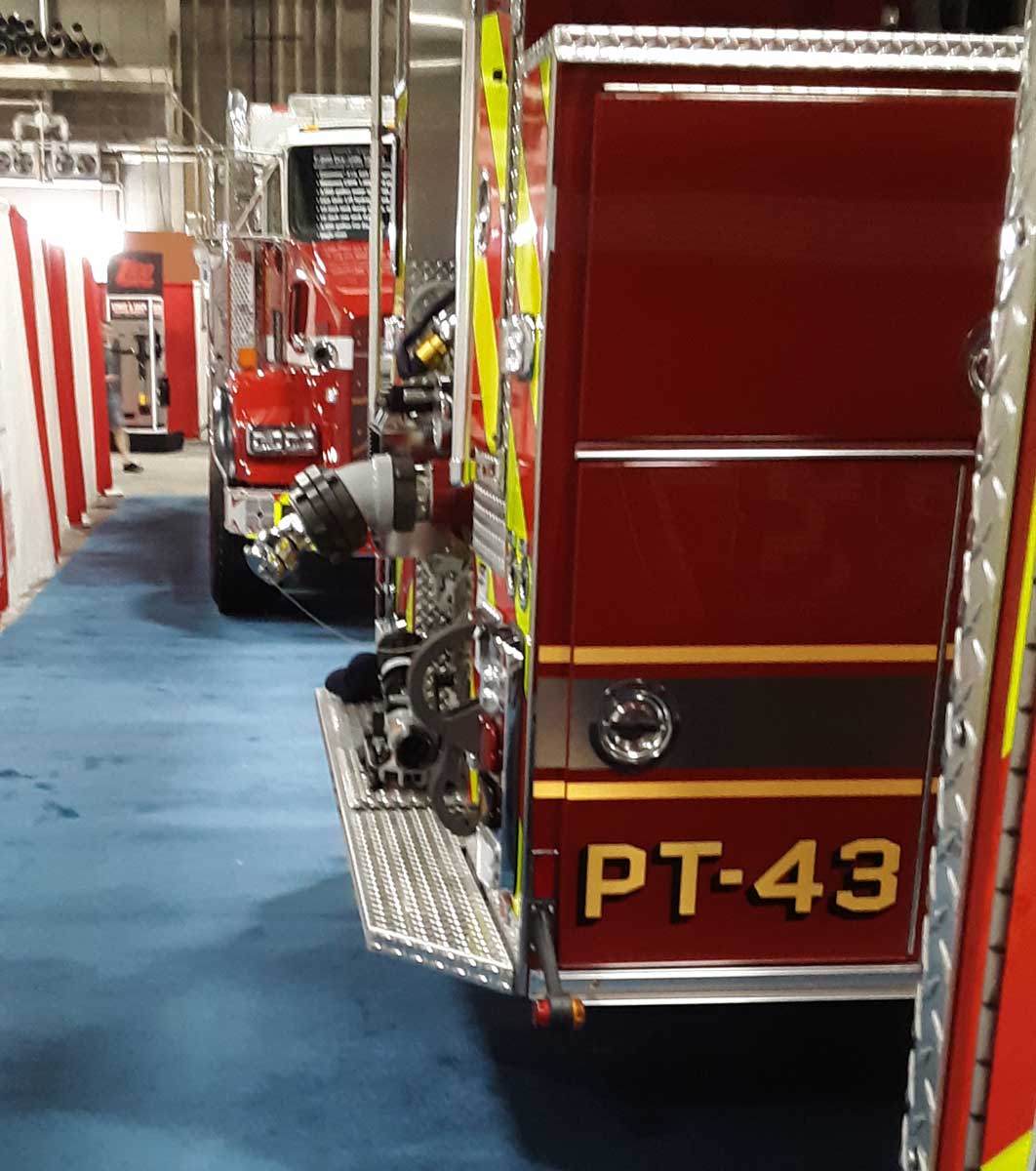
Rear Bumpers
(5-6) What was once called the rear step in photo 5 now has the politically correct term of “rear work platform.” It could be referred to as a rear bumper, although in many cases it isn’t a real one as shown on the quint in photo 5. In either case, the LDH fittings and piping might serve as “expensive-to-replace” bumpers if the rigs back into something.
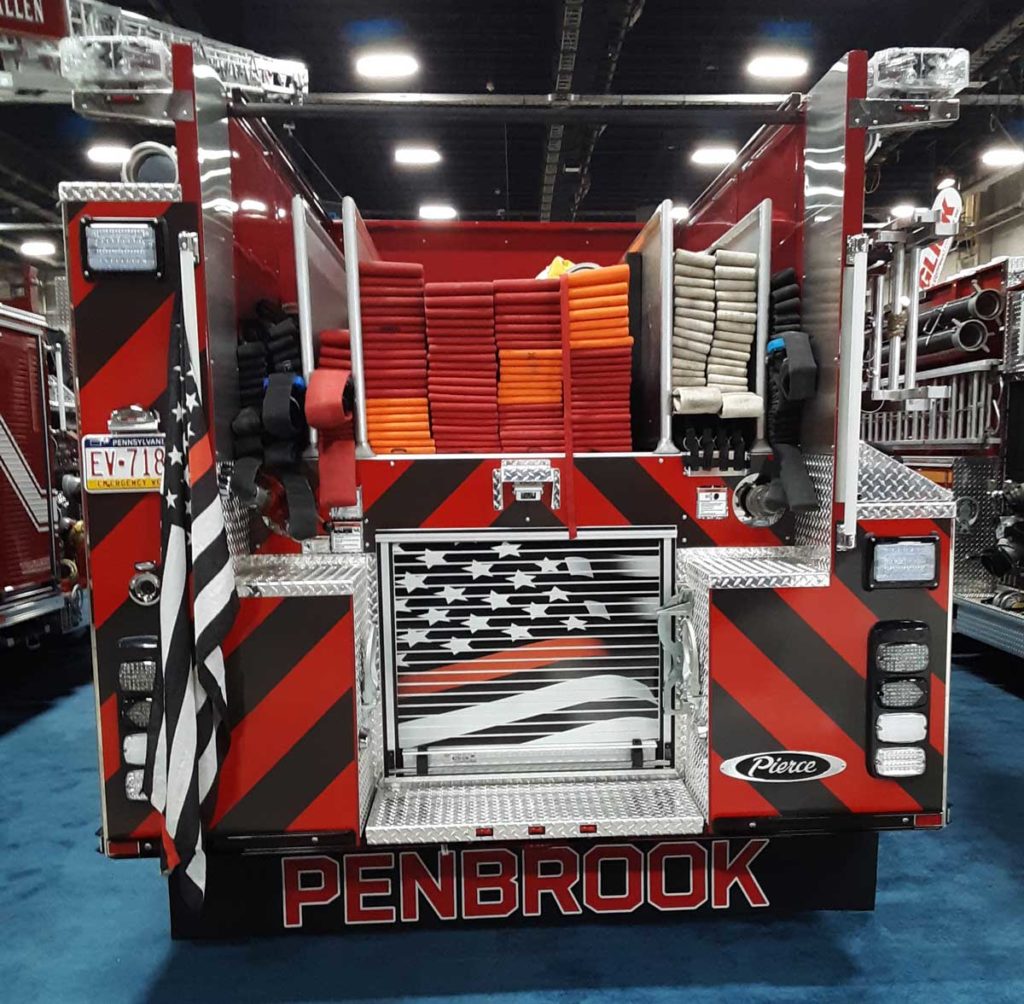
Pike Poles+
(7) This Pierce pumper has a unique way of storing four pike poles in slide-in storage tubes below the static, double-stacked, 3-inch hose bed. Three of the four rear preconnects are shoulder loaded reachable from the ground. The far left two are in a single bed with no divider and are supplied by a gated leader line wye. It appears when one is pulled, the other could tip over. Interestingly, one is shoulder loaded and the other isn’t. The wye must be tilted because it is too close to the compartment wall to move its handles. The 2½-inch in a shoulder load is either preconnected up in the front of the hosebed or it is a static load. The hosebed looks like it’s easy to work off of.
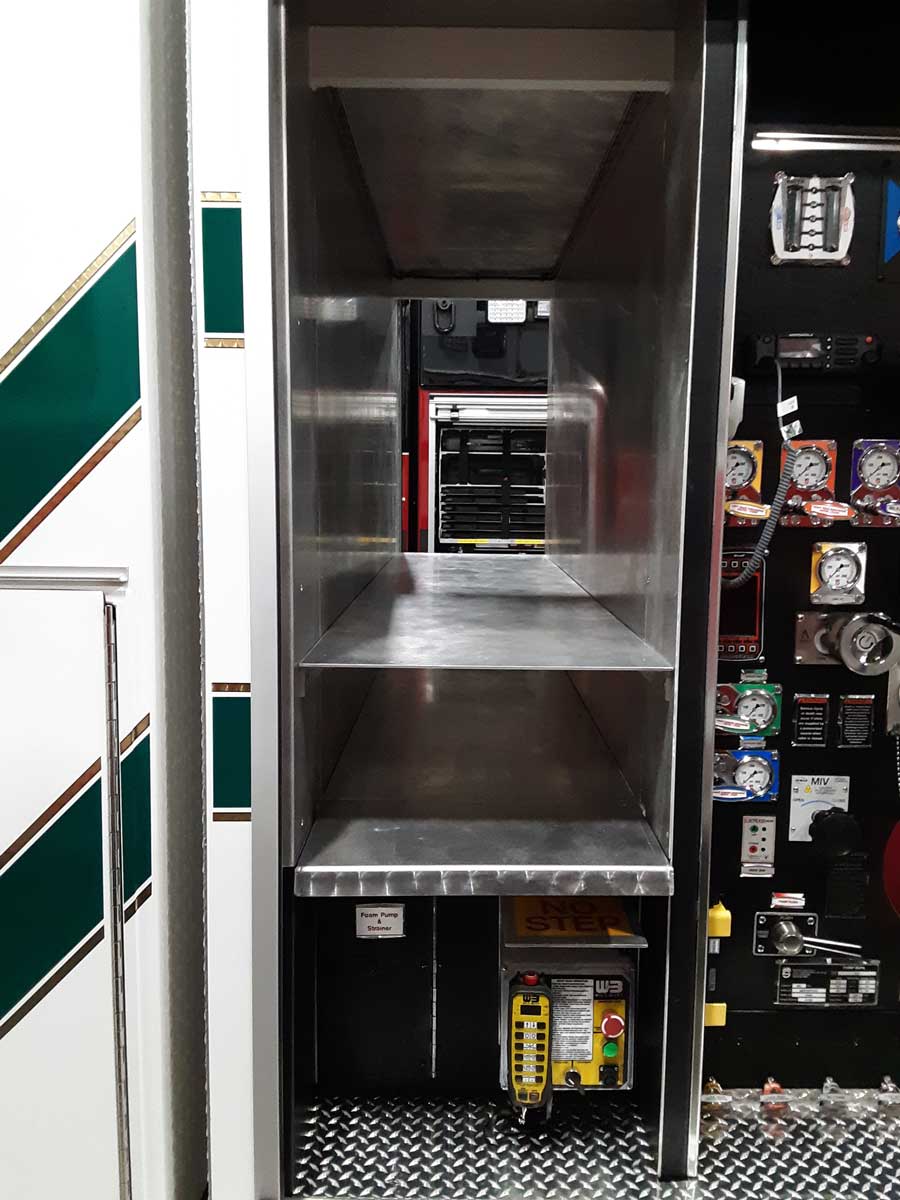
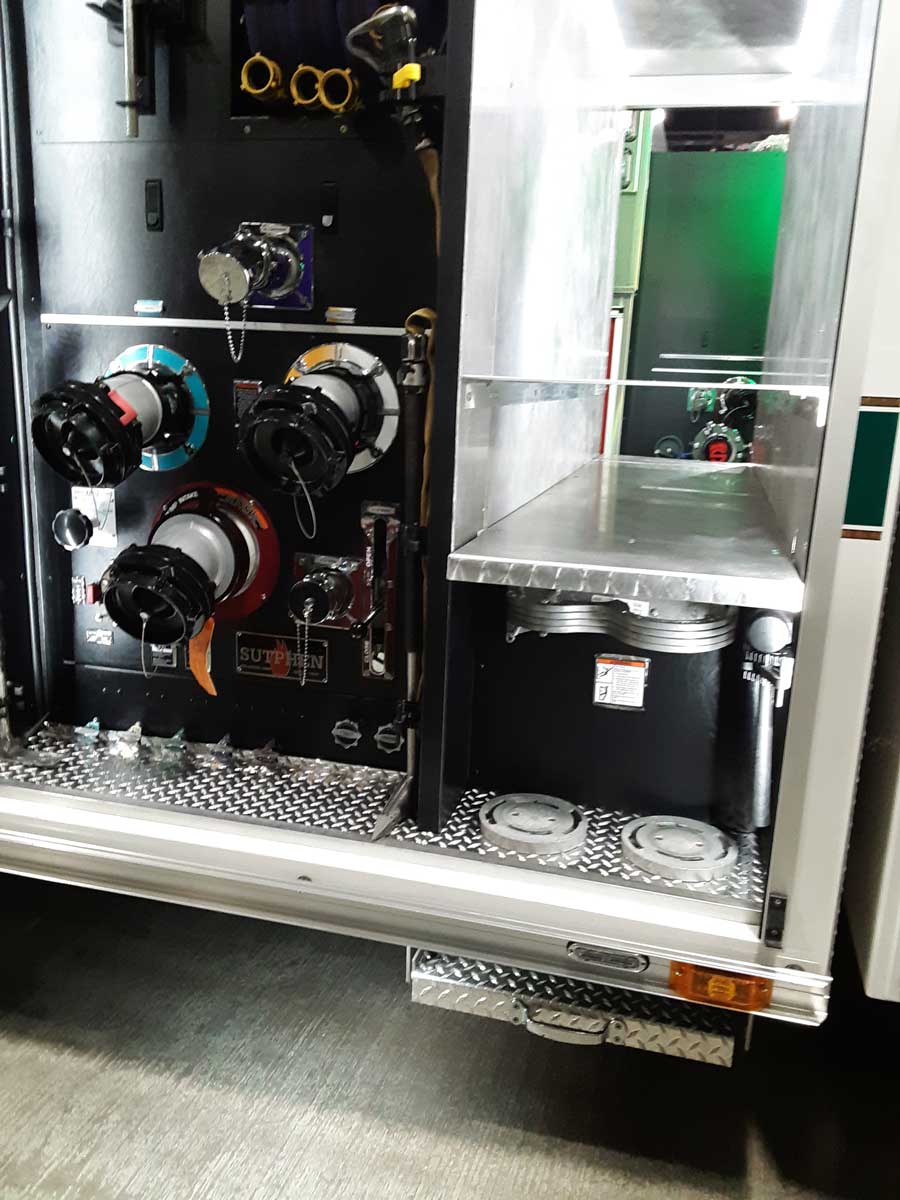
Full-Through Panel Storage
(8-9) Both side pump panels on this Sutphen are behind roll-up doors. At the front of the pump house just above the frame rails is a full through compartment with a single, bolted-in horizonal divider. I don’t know what is intended to be stored here but a stokes basket, at 88-inches in length, would fit, as would full-length backboards (72 inches) and short ladders. It’s a versatile setup and it may not be completed yet. The officer’s side panel in photo 9 is a busy place but well laid out.
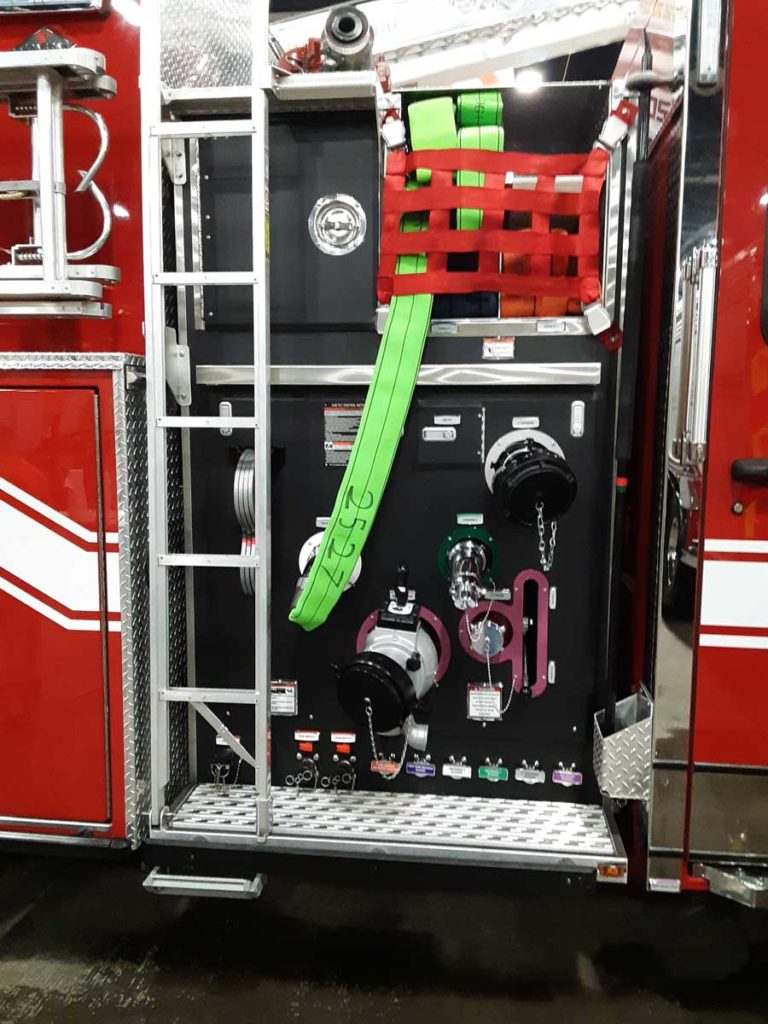
Pump House Access Ladder?
(10) This Spartan ER has what appears to be a removable folding (a.k.a. collapsible) ladder that is opened and mounted on the officer’s side to access the top of the pump house. It is a unique idea. Usually there are small access steps on the forward face of a full-height side compartment to access the top. Else firefighters would have to crawl up the back of the rig and crawl over the hose bed to access the dunnage area. The 2½-inch crosslay is preconnected to a side discharge.

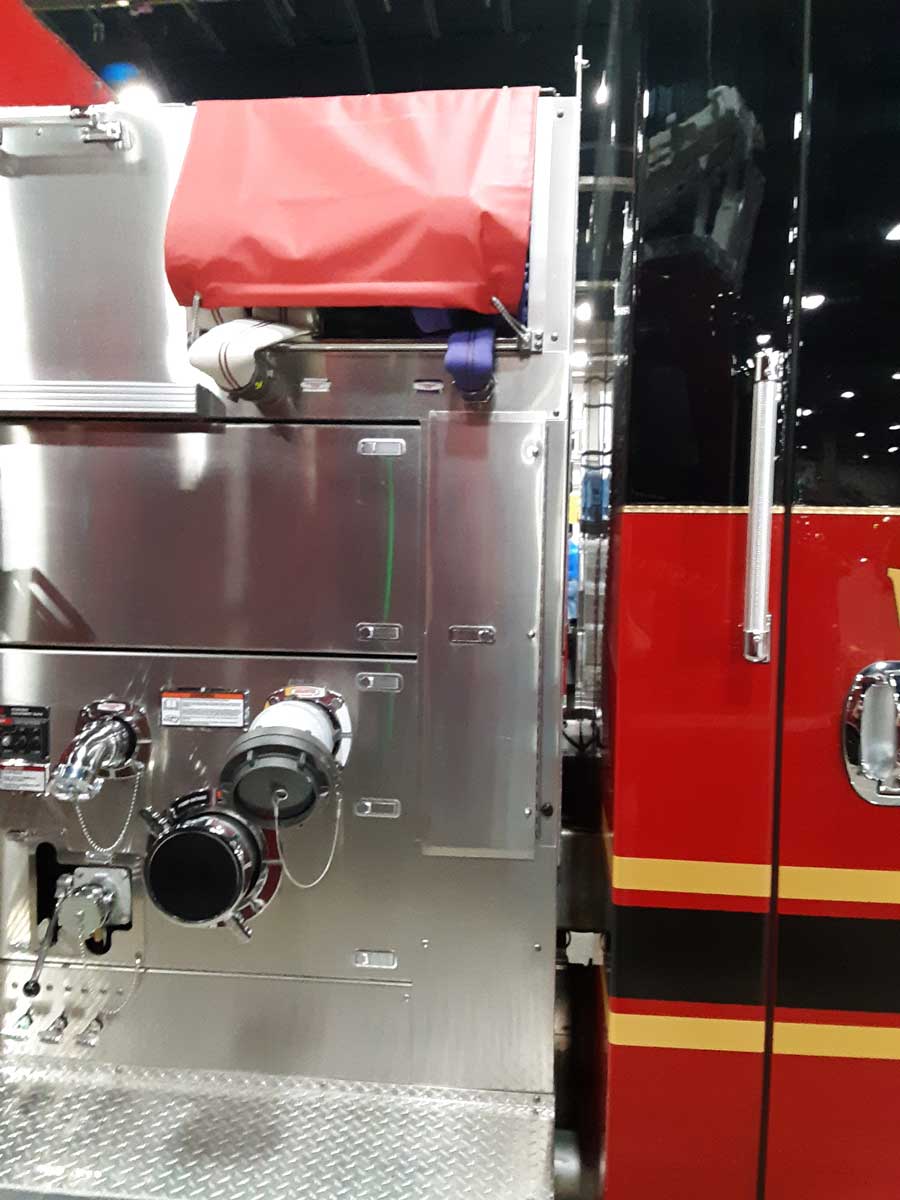
Discharge Elbows
(11) National Fire Protection Association 1901, Standard for Automotive Fire Apparatus, sentence 16.7.7 states: “Any 2 in. (52 mm) or larger discharge outlet that is located more than 42 in. (1070 mm) off the ground to which hose is to be connected and that is not in a hose storage area shall be supplied with a sweep elbow of at least 30 degrees downward.” This rig meets that criterion. However, the 5-inch LDH connection is about six feet off the ground. It might be difficult for a vertically challenged firefighter to disconnect a six-foot long piece of 5-inch full of water while perched on the tailboard.
(12) Another rig that meets the standard for discharge elbows has these panel-mounted discharges preconnected to crosslays about six-foot-plus off the ground. Chances are they’ll kink—especially if a low-pressure nozzle is being used. Common sense might dictate providing elbows even when not required by a regulatory standard.
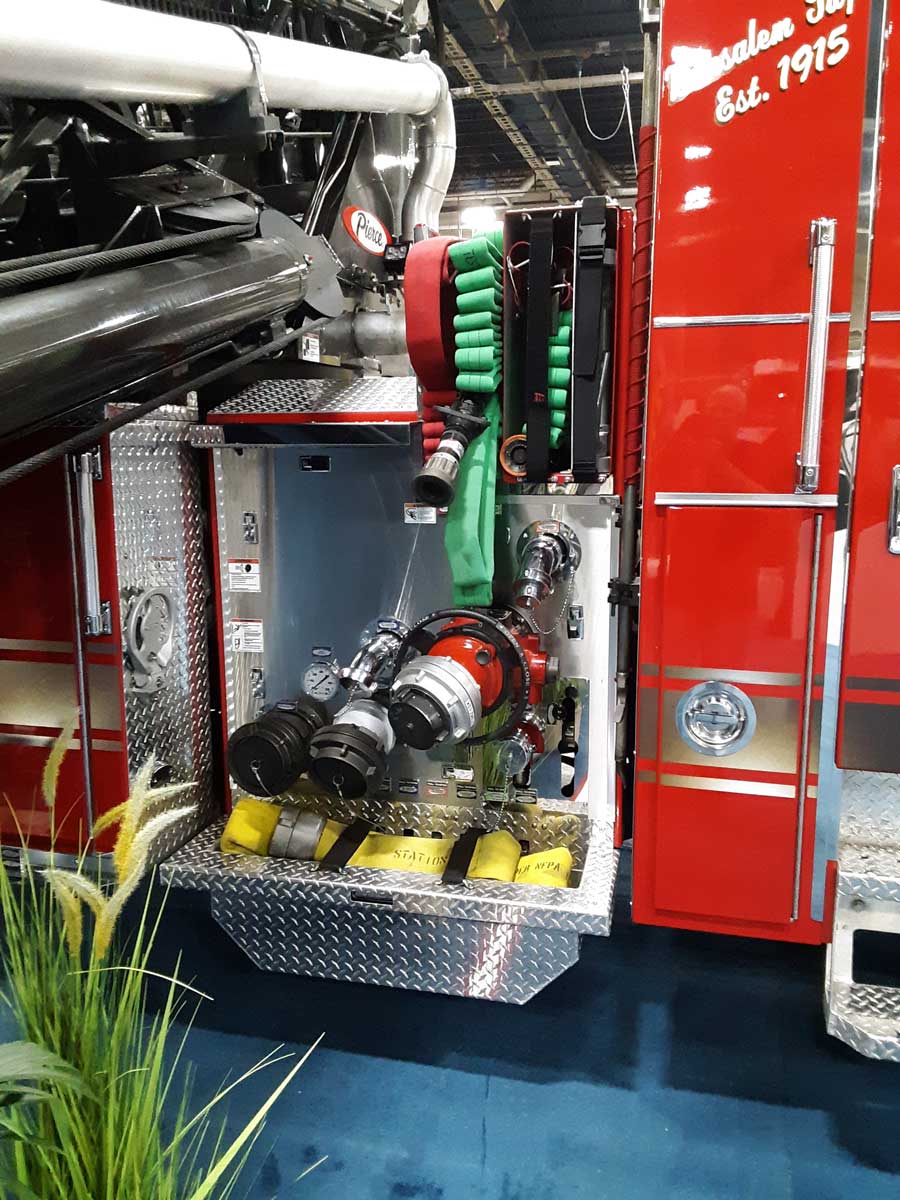
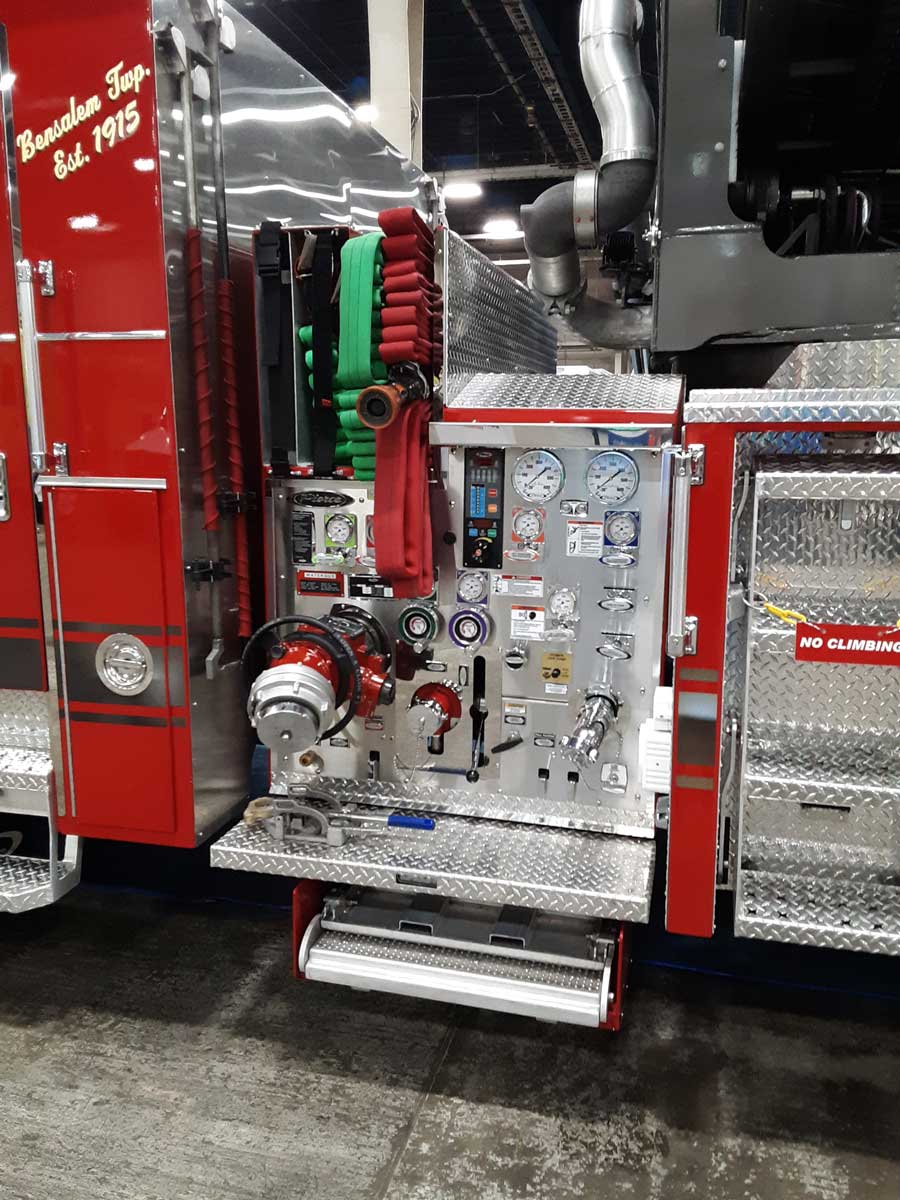
Pump Panel Ladder Storage
(13-14) This Pierce quint, a mid-mount tower, has an interesting crosslay ladder storage location. Immediately behind the chassis cab in what would be a dry crosslay bed is storage for what looks like a short ladder with folding hooks. The hooks are just visible on the officer’s side in photo 13. The width of most pump houses is about 70 inches wide, so it’s a logical place to store one—even if the ladder must be cut-to-size.
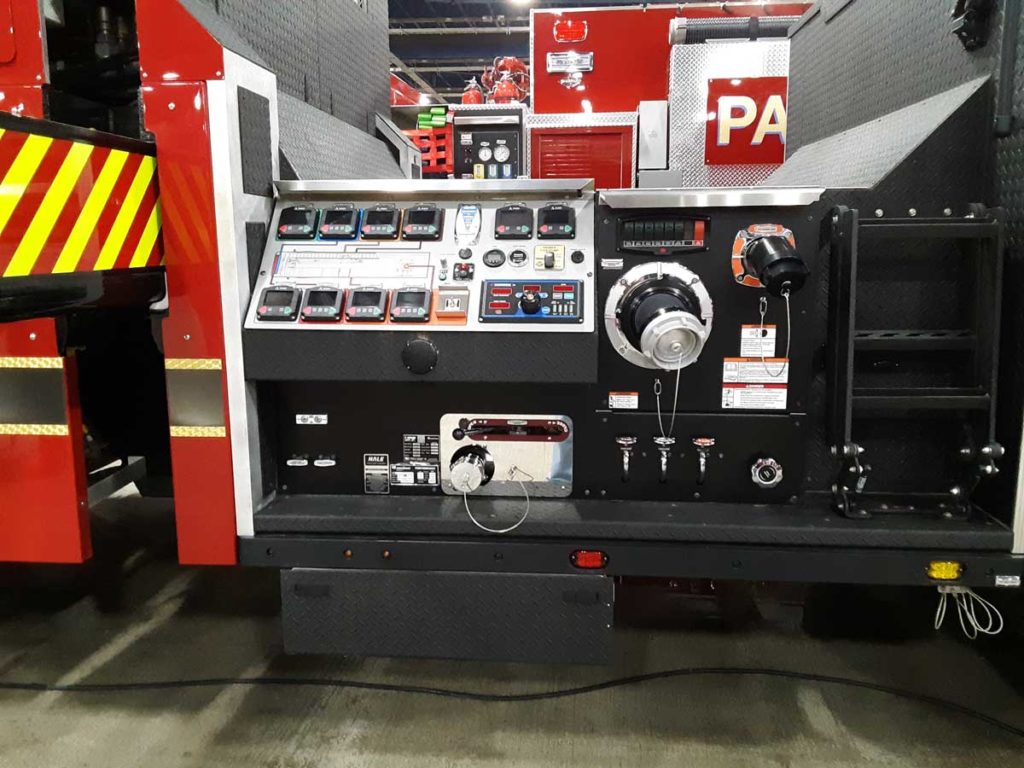
The operator’s panel on this Rosenbauer quint is known as a “diagrammatic” panel. It features a top view diagram of the rig with indicator lines from each electric valve controller to the appropriate discharge location. It is a compact, well laid-out design for a rig with a limited number of discharges.
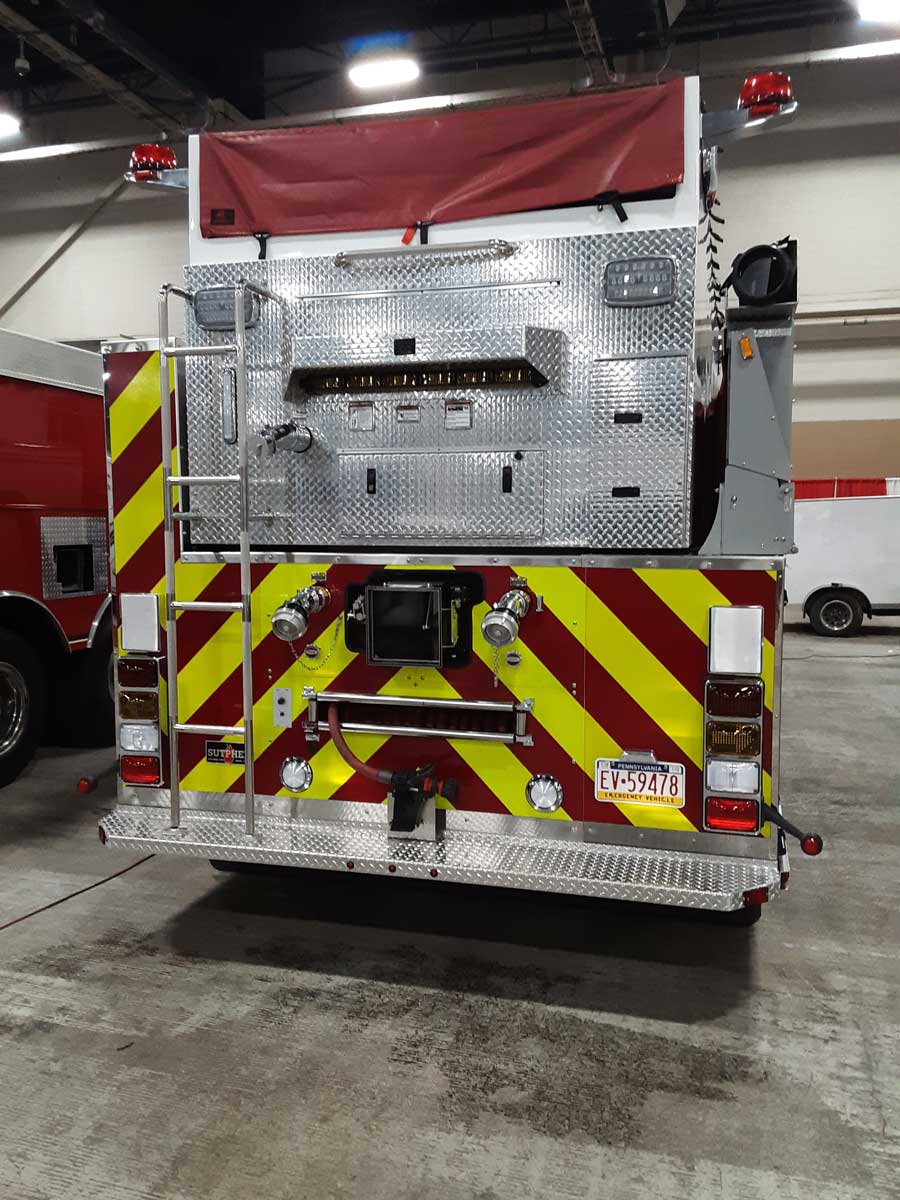

Booster Reels
(16-17) Booster reels seem to be making a comeback, albeit not for structural firefighting but for nuisance fires, however you define them. The Sutphen tanker in photo 16 has a reel tucked beneath the rear dump valve. Photo 17 shows a 4Guys with an enclosed officer’s side pump panel with a reel mounted above the pump behind the panel. This rig also has a 1¾-inch preconnect in the running board hose well as an extinguisher mounted on the wall. Spanners and the 4-inch by 5-inch storz adaptor are mounted where they’ll likely be used. If there’s an “open spot,” why not mount something to it?

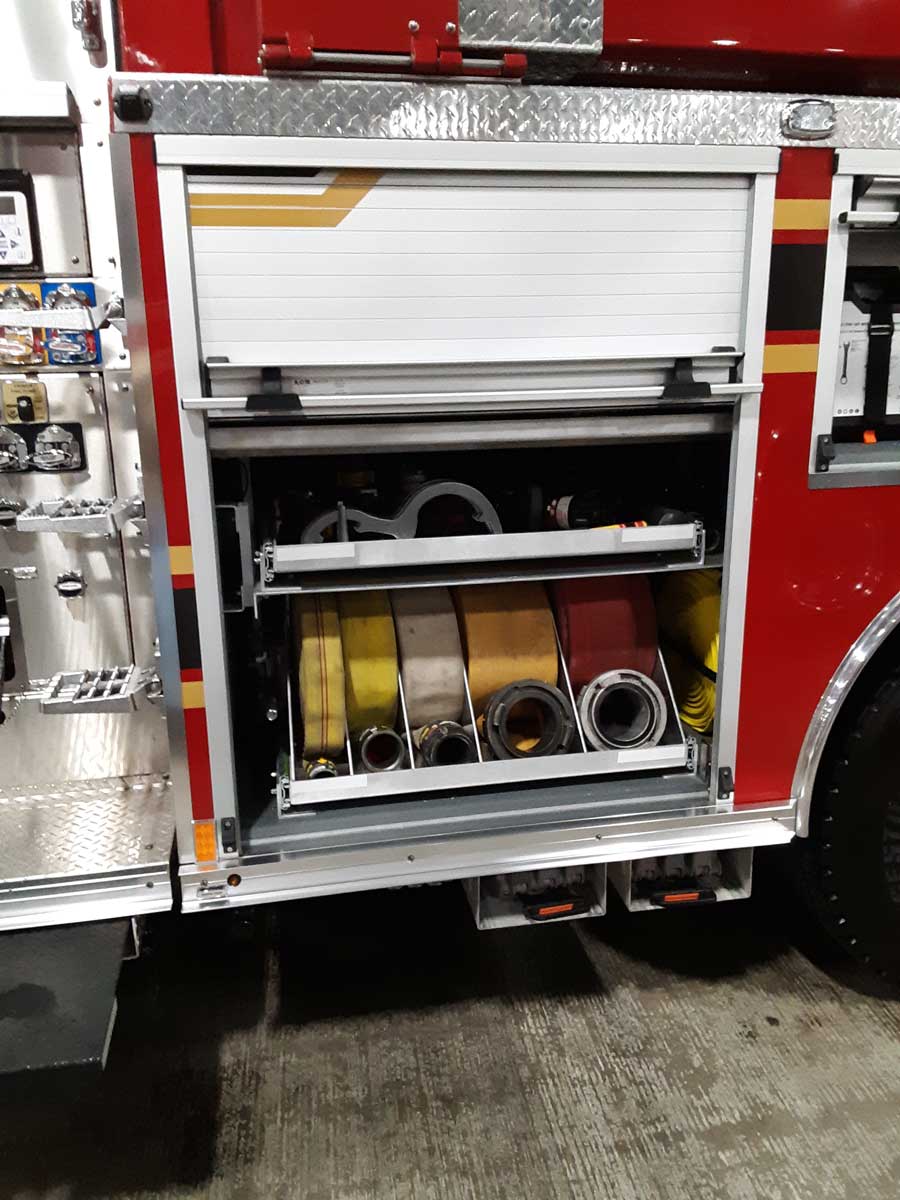
Donut or Coiled Rolls?
(18-19) This dual-axled Rosenbauer tanker has numerous hose rolls mounted on slide-out trays in the compartments ahead of and behind the duals on the driver’s side. The compartment forward of the wheels has one each 1¾-, 2½-, and 3-inch as well as two 5-inch LDH rolls plus one unknown size tucked around the right door jamb. The rearward compartment has three 3-inch and two 5-inch rolls. My personal preference is “true” donut rolls for coiled hose, where the hose is folded over on itself and rolled from the center with the couplings ending up close to each other. I think they’re very easy to deploy but admittedly harder to store. With the possibilities of a tanker being filled by numerous lines at a fill site or is used to nurse multiple rigs at a scene, having multiple coiled pony lengths of hose is not a bad idea. It beats crawling up the back of the rig and pulling a full 50-foot or 100-foot length off to go 20 feet.
***
Every fire department has its own way of doing things, as does each apparatus manufacturer. As mentioned earlier, some features observed on equipped rigs at trade shows may work for another department. Then again, there may be designs that are well worth avoiding. Good luck.
BILL ADAMS is a member of the Fire Apparatus & Emergency Equipment Editorial Advisory Board, a former fire apparatus salesman, and a past chief of the East Rochester (NY) Fire Department. He has 50 years of experience in the volunteer fire service.

